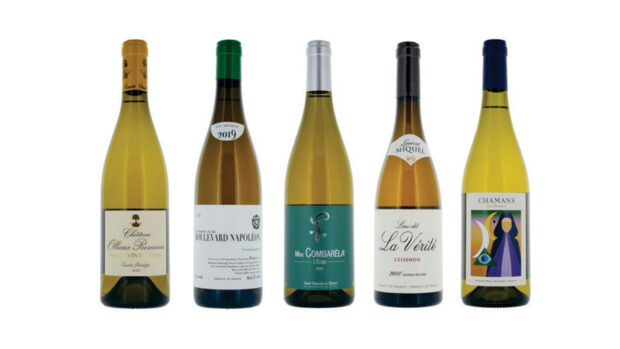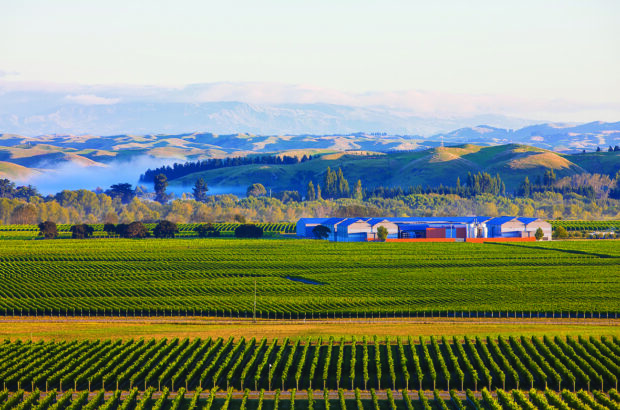Oh dear. No awards and few compliments. Over-cropping and high yields were blamed and there was general despondency over the Pinot Grigio grape’s potential after this tasting of 72 wines from northern Italy. A few, however, did shine through the gloom – they were those offering fresh, citrussy, fruity flavours.
‘I was disappointed with the quality level; there was a lack of concentration,’ began David Baldwin: ‘Some did have good depth and flavour, but many were quite bland and flat.’ Ann Tupker MW agreed: ‘A lot of the wines were unexciting; a tiny number I thought were unacceptable, and a few I rated four with one slightly higher.
I found myself groping for adjectives to use to describe the wines. The problem – what the tasting showed – is that if you don’t crop Pinot Grigio very low then you end up with this rather neutral, quite dilute, if pleasant wine, with not a lot of concentration – in other words boring.’
Tupker suggested that oak would add interest. ‘It’s a more neutral grape than Chardonnay, but has that powerful alcohol on the finish and a fairly oily texture, which I think stands up well to oak.’ Yet Simon Meads disagreed: ‘I wasn’t altogether convinced about the use of
oak: to me it was as though it was just hiding a lack of concentration of fruit.’ His vote lay with the fruit-driven wines which he believed possessed some character ‘that many of the other wines lacked’.
Restaurant wines
These were restaurant rather than home wines, the panellists concurred, bar Susan Keevil who said she would buy the better wines to drink at home. ‘The good ones would be very nice on a sunny summer day
as aperitifs – some had lovely melony, grapefruit, crisp citrus flavours – yet, disappointingly there were quite a few in the tasting that were really substandard.’
Baldwin was the only one who found any sort of regional difference, suggesting the Collio wines showed up more acidity, and these were the wines that he gave higher marks to. Tupker admitted to not being able to tell the difference between the regions and ‘did not even really notice the vintage differences’. While Keevil added: ‘I wanted there to be more difference between wines’ origins, I was willing the different terroirs to stand out, but they just didn’t.’
Keevil voted in favour of drinking them young. ‘It was really only the recent vintage wines that I wanted to drink. Given a year, they tired out and lost the primary characters on the nose. I think this might be due to some high yields.’
The ‘very pale’ colour of some was questioned by Tupker and, discovering occasional CO2 bubbles, asked: ‘I wonder if they were trying to inject a bit of freshness into them? Most are for drinking now and maybe a few could last a couple of years, but the point is to drink them young and fresh.’ And Baldwin proferred: ‘Some had real colour problems – pink salmon to almost brown. I was looking for a mid-straw, with a slight green tinge. I found the wines with age rather tired.’
Alternative to Chardonnay
This grape has at times been hailed as the alternative to Chardonnay at the cheaper end of the restaurant list. ‘A lot of people have caught on to the “abc” mentality of anything but Chardonnay, but ultimately they still like drinking it,’ suggested Baldwin. ‘There was
one wine in particular that I thought was Chardonnay and for a commercial style of Pinot it’s probably not a bad thing to have that breadth: crop less, increase the alcohol and add some oak, and they could be on to a good thing.’
‘New Chardonnay?’ questioned Meads. ‘Why pretend to be the new Chardonnay – they’d be much better off pretending to be a new Sauvignon. Some are attempting big, fat flavours, plenty of oak and maybe a bit of malolactic but I don’t think the grape can handle that. They’d be better off doing more in keeping with the crisp, light fruity style – and keeping it a touch floral – as a restaurant wine.’
Tupker preferred those with an Alsatian type of weight as they were ‘more concentrated and had a better length’, and also liked the one or two that had an almost vendage tardive quality about them. ‘They were generally good, friendly restaurant wines, but in this role, also neutral, clean, pleasant, attractive, good with food, but not exciting, which to me, I suppose, is the role of Pinot Grigio.
‘It’s one of those “trendy, bland, but great food wines”.
It provides a good background and some wines had that bitterness on the finish which complements the food. The heavier wines, which I gave better scores to, are probably less food friendly.’
Premium wines
Chosen as premium, these wines retailed at £7–8 and above. ‘If I was paying £7 or £8 for some of these wines I wouldn’t be happy,’ said Tupker. ‘Many suggest cool fermentation as there was no real fruit coming in. Now people want more character in their wines and are willing to pay for it. Maybe there are a few really good producers, yet the rest are possibly coasting along on that reputation with no real desire to improve quality.’ And Keevil went as far as to ask: ‘Will they get away with this for much longer? It seems a bit complacent.’
So what should the regional growers be doing to improve quality? Without inspiring a lot of confidence for the future, Meads proffered: ‘They could be a lot better – but then again maybe they don’t have to be – it seems to be the sort of thing that people will buy and not be overly critical as they expect it to be quite neutral.’
https://www.decanter.com/wine-reviews-tastings/five-alternatives-pinot-grigio-344025/











